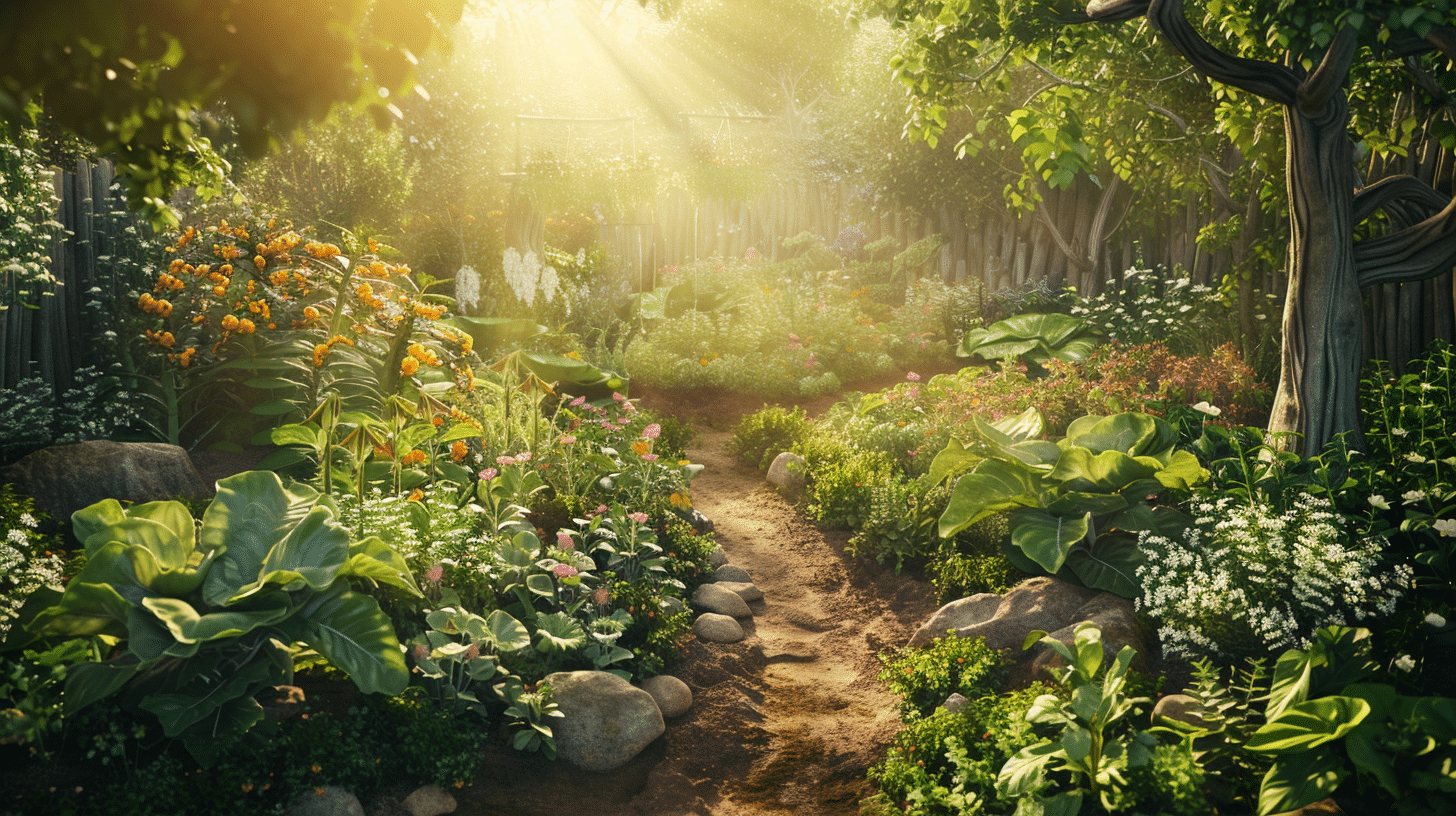How to Enhance Your Gardening Skills with Advanced Permaculture Techniques?

In this age of sustainable living, a booming interest in permaculture displays a shift towards environmental consciousness. But what exactly is permaculture and how can it help enhance your gardening skills? At its core, permaculture is a design system for creating sustainable and self-sufficient ecosystems. It’s not just about gardening; it’s about designing systems that work with nature to provide food, energy, and shelter. By integrating permaculture techniques into your gardening practices, not only will you be creating a more sustainable garden, but you’ll also be improving soil health, reducing water use, and growing healthier, more resilient plants. Let’s explore advanced permaculture techniques to elevate your gardening prowess.
Embracing the Core Principles of Permaculture
Understanding and embracing the core principles of permaculture is the first step in enhancing your gardening skills. These guiding ethics – care for the earth, care for people, and fair share – form the foundation of permaculture design. This section will help you understand these principles and how they can guide your gardening practices.
In the same genre : How to Master the Art of Calligraphy and Hand Lettering for Beautiful Invitation Cards?
Care for the earth entails working with nature rather than against it. This involves preserving and enhancing the biodiversity of your garden and promoting the health of your soil. Healthy soil teeming with life is not only beneficial for plant growth, but also helps in the sequestration of carbon, thus combating climate change.
Care for people is about designing gardens that meet our needs while also promoting our health and wellbeing. This means growing plants that provide us with nutritious food, but also creating spaces for relaxation, play, and connection with nature.
Have you seen this : Unlock your luck: exciting casino bonuses await you!
Fair share is about limiting our consumption and ensuring that resources are equitably distributed. In the garden, this may mean sharing surplus produce with our community, or designing systems that recycle nutrients and water, thereby reducing our consumption of these precious resources.
Learning from Permaculture Design Courses
To fully grasp the intricacies and nuances of permaculture, it’s recommended to take a permaculture design course. This course will help you learn the fundamentals of permaculture design, its principles, and various techniques that can be applied in your own garden.
A permaculture design course will introduce you to the concept of zones. Zones are a way to organize your site based on the frequency of human use and plant or animal needs. For example, plants that require frequent attention or produce food regularly should be placed in zones closer to the house.
You will also learn about sector analysis, which involves identifying various influences or ‘sectors’ that need to be considered in your garden design, such as sunlight, wind, water, and wildlife.
Implementing Water-Saving Techniques
Water is a critical resource in any garden, and permaculture offers innovative and sustainable ways to manage it. Implementing water-saving techniques in your garden can reduce your water usage, save you money, and contribute to a more sustainable ecosystem.
One water-saving technique is to design your garden in a way that it captures and stores rainwater. This can be achieved with swales, which are contour-based water harvesting ditches, or rainwater harvesting systems that collect rainwater from rooftops.
Another technique is the use of mulch, which not only suppresses weeds but also retains moisture in the soil. By covering the soil with mulch, you reduce evaporation, which means less watering is needed.
Fostering Soil Health and Biodiversity
Building healthy soil is one of the most important aspects of permaculture gardening. Healthy soil is full of life and nutrients and is key to growing strong, resilient plants.
Permaculture promotes several practices to enhance soil health. One of these is composting, which involves turning organic waste into nutrient-rich compost that can be added back into the soil. This not only recycles waste, but also feeds the soil and promotes a diverse soil microbiome.
Plant diversity is also essential in a permaculture garden. By having a variety of plants, you’ll be attracting different types of beneficial insects and birds, which will help to keep pest populations in check.
Utilizing Permaculture Techniques for Plant Selection and Placement
The last step in enhancing your gardening skills through permaculture is understanding how to strategically select and place your plants. In permaculture, careful consideration is given to each plant’s unique characteristics and needs, as well as how it interacts with other plants and elements in the garden.
This approach often involves creating plant guilds, which are groups of plants that work together to support each other. For example, a tree might provide shade for a shrub that prefers lower light levels, while the shrub might deter pests that could harm the tree.
Overall, permaculture is not just about gardening practices. It’s a holistic approach that emphasizes the creation of sustainable, self-sufficient systems. By integrating these advanced techniques into your gardening, you’ll be setting the groundwork for a healthier, more abundant garden that works with nature rather than against it.
Integrating Advanced Permaculture Techniques into Your Garden
Now that you understand the core principles, have gained knowledge through a permaculture design course, and have learned about water-saving techniques and soil health, it’s time to integrate these advanced permaculture techniques into your garden.
Firstly, look at rainwater harvesting. This involves creating systems to collect, store, and distribute rainwater for use in your garden. This can be as simple as a rain barrel at the bottom of a downpipe or as complex as an interconnected system of tanks, swales, and pumps. Rainwater is a free and sustainable source of water that can significantly reduce your reliance on mains water.
Next, consider the placement of your plants and the concept of zones. The frequent interaction zones should house plants that need regular attention or provide food regularly. Less frequently visited zones can contain plants that require less maintenance.
Then, turn your attention to your soil. Healthy soil is the foundation of a successful permaculture garden. It is important to add organic matter regularly to improve the soil structure and nutrient content. Composting and mulching are both excellent ways to do this.
Finally, choose your plants carefully. Permaculture encourages the use of perennial plants, which require less maintenance and provide food or other benefits over a long period. Also, consider using cover crops to help suppress weeds, improve soil health, and provide habitat for beneficial insects.
Concluding Thoughts: The Benefits of Permaculture Gardening
In conclusion, enhancing your gardening abilities with advanced permaculture techniques presents a multitude of benefits. It allows you to interact harmoniously with nature, creating a sustainable and self-sufficient garden that not only provides food but also contributes to a more habitable planet.
By embracing the core principles of permaculture design, you make a commitment to care for the earth, care for people, and fair share. You also immerse yourself in a world of learning. Opting for a permaculture design course can provide you with invaluable insights into the art of permaculture, from understanding what plants to grow, to where to place them and how to care for them.
The techniques you learn, such as water management through rainwater harvesting, help you use resources more efficiently. Your garden becomes a symphony of perfect symbiosis, with each element playing its part to contribute to the whole.
As you enrich your soil with organic matter, foster biodiversity, and strategically select and place your plants, your garden will become a testament to the principles of permaculture. It will be a place where you can grow food, seek solace, and share your bounty with others.
Taking the journey into permaculture gardening is not just about developing your gardening skills – it’s a lifestyle choice that resonates deeply with the principles of sustainable living and environmental stewardship. By choosing to implement permaculture in your garden, you are making a positive impact that reaches far beyond the boundaries of your property. This is the beauty and power of permaculture.
